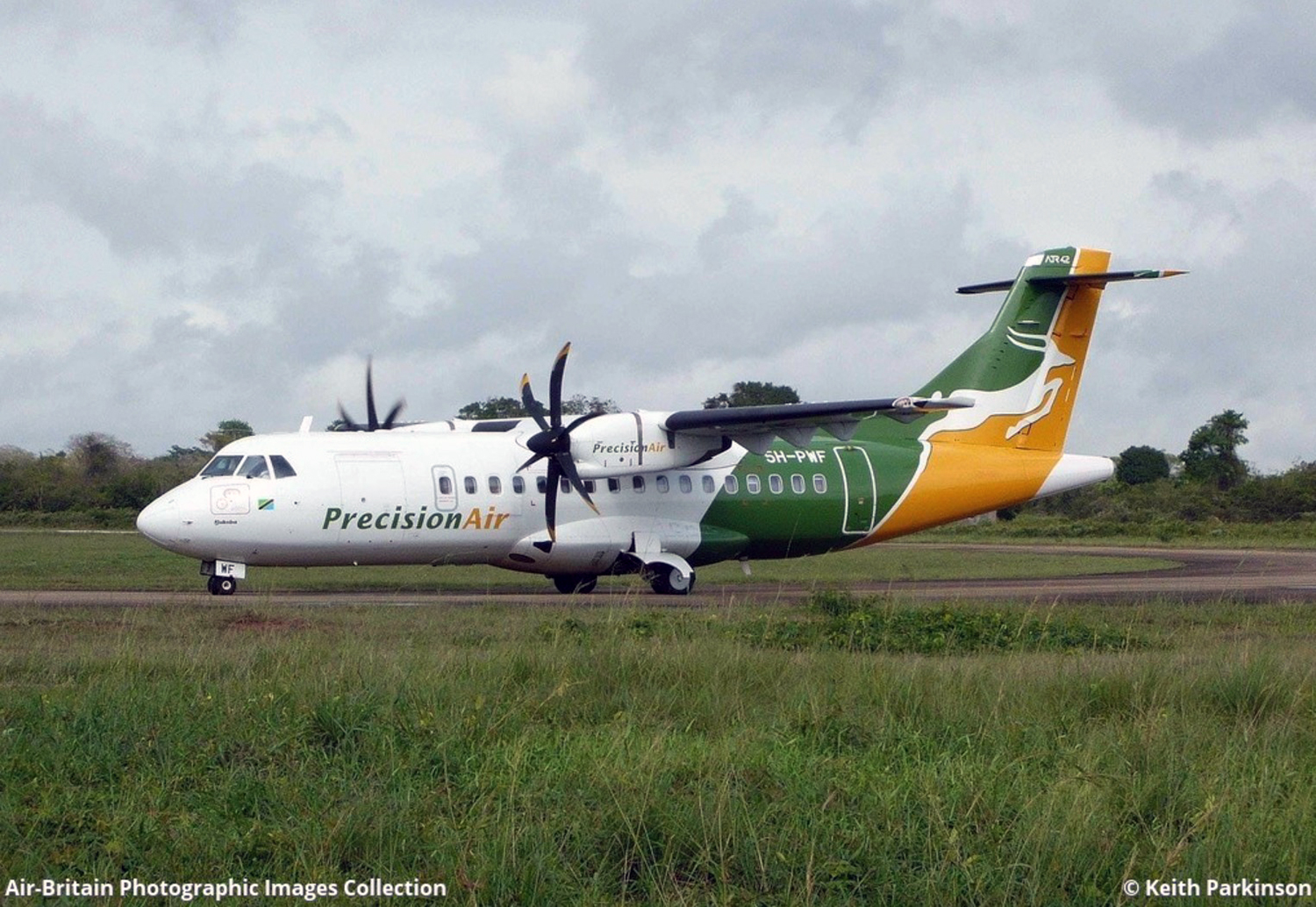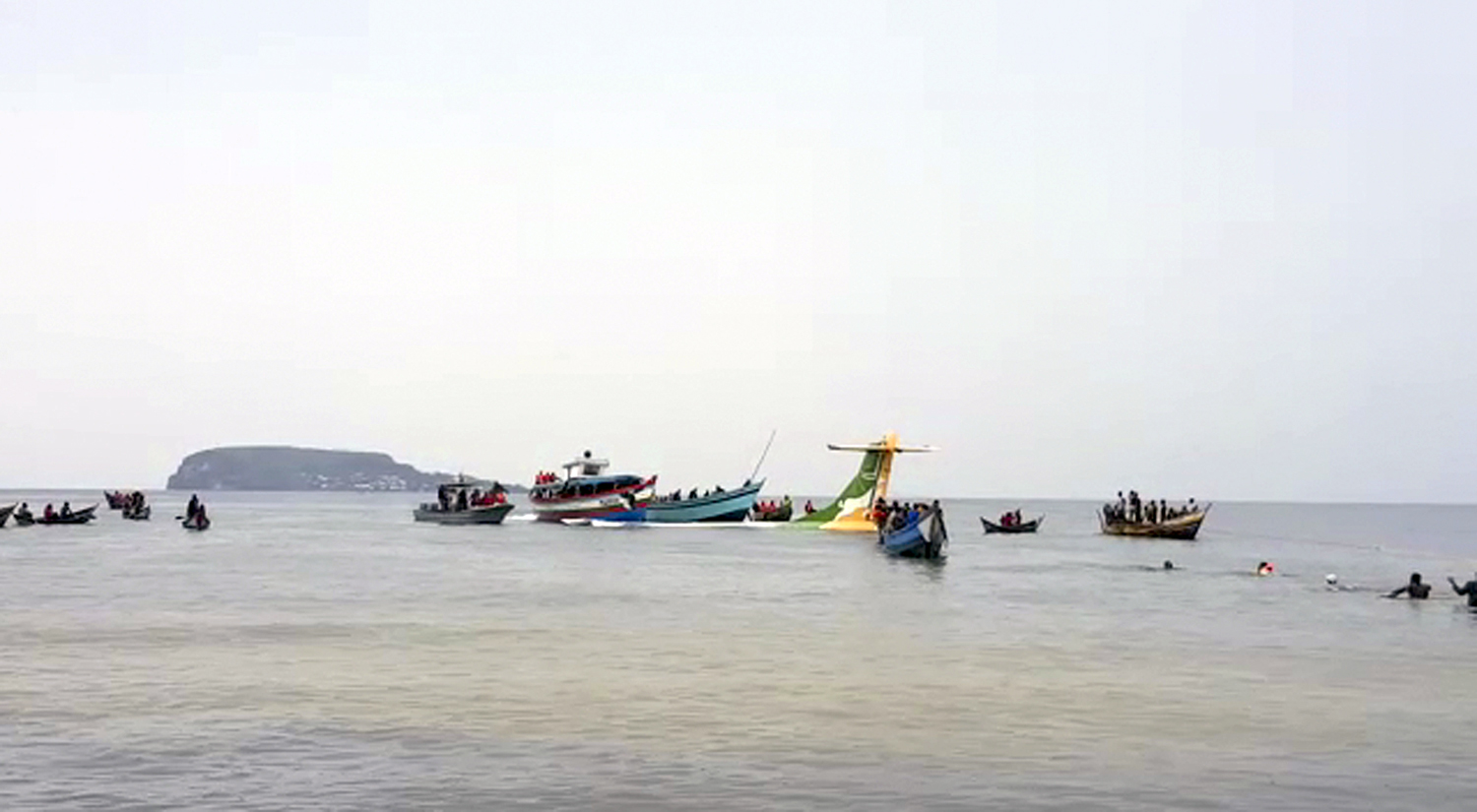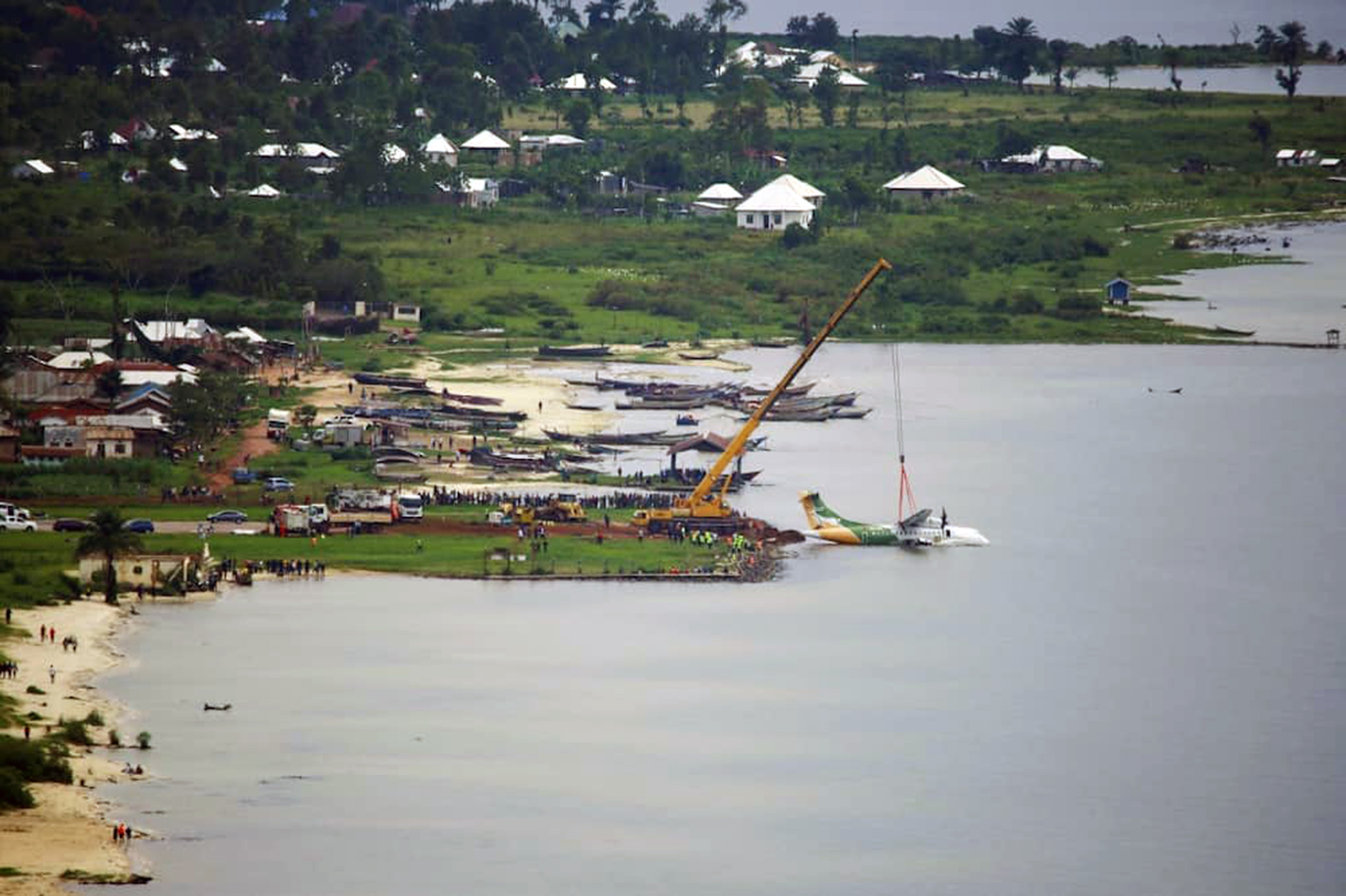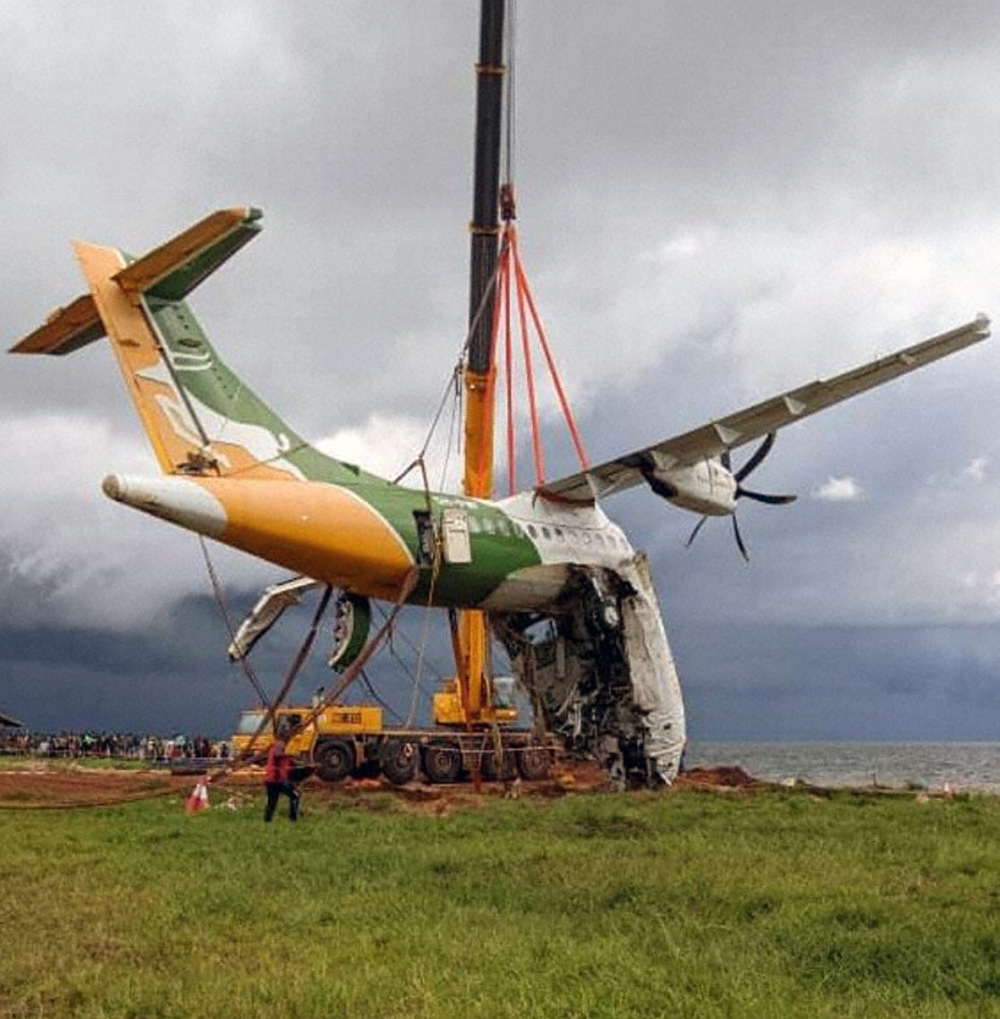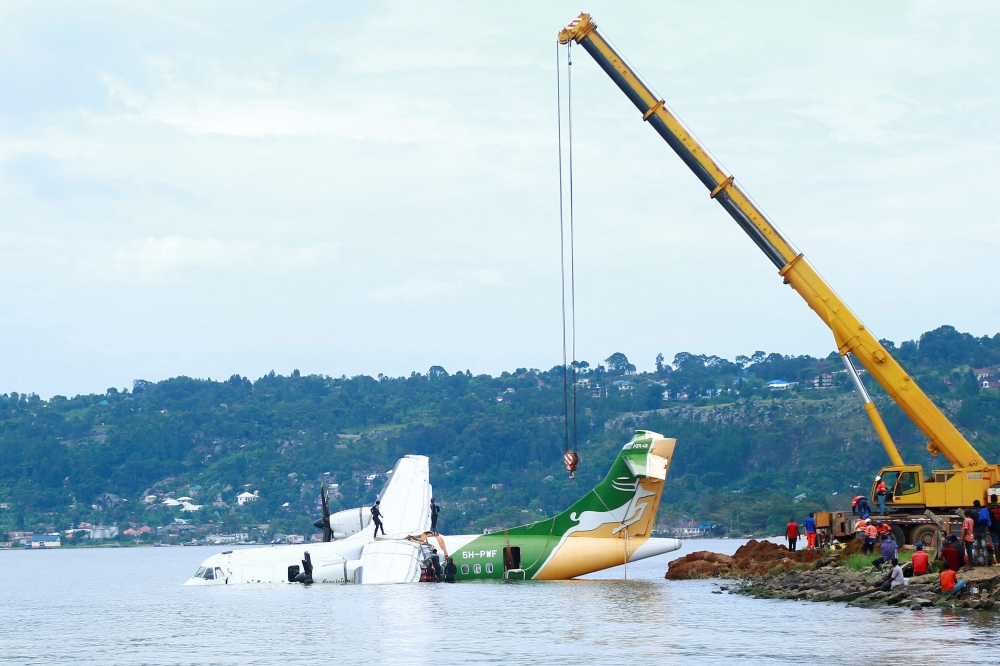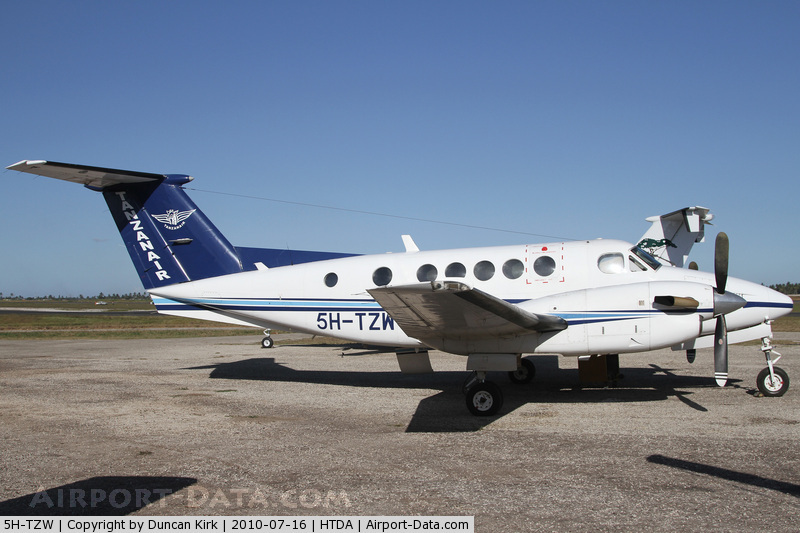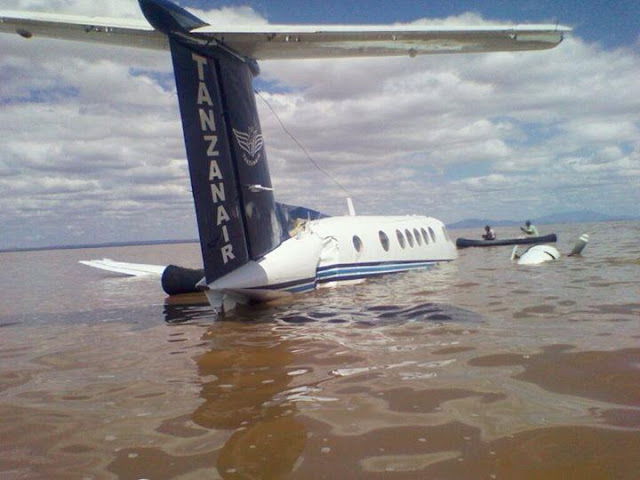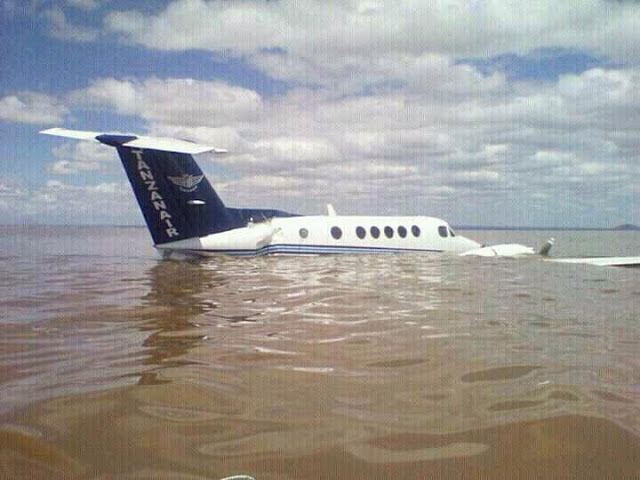Crash of an ATR42-500 off Bukoba: 19 killed
Date & Time:
Nov 6, 2022 at 0843 LT
Registration:
5H-PWF
Survivors:
Yes
Schedule:
Dar es-Salaam – Bukoba
MSN:
819
YOM:
2010
Flight number:
PW494
Crew on board:
4
Crew fatalities:
Pax on board:
39
Pax fatalities:
Other fatalities:
Total fatalities:
19
Captain / Total hours on type:
11919.00
Copilot / Total hours on type:
1700
Aircraft flight hours:
16893
Aircraft flight cycles:
16610
Circumstances:
During the approach, the crew encountered heavy rain and thunderstorms with lightning as well as significant crosswind and turbulence. During the final approach, several nose down inputs on the control column increased the descent rate of the aircraft. The EGPWS SINK RATE-SINK RATE alert triggered 15 seconds before the accident. Then the EGPWS PULL-UP warning triggered, followed by flight crew's nose up input on control column, around 2 seconds before the aircraft struck the water surface of Lake Victoria about 500 meters short of runway 31 threshold. The impact with the water caused significant damage to the aircraft fuselage followed by water entering the cabin and flight deck. There was no fire but the aircraft was damaged beyond economic repair. Of the 43 persons on board, 17 passengers and 2 pilots lost their lives while 22 passengers and 2 cabin crew members survived without serious injuries. It is considered that conducting an unstabilized final approach in poor weather conditions that could not allow clear visual contact with the ground was a major factor in this accident.The decision of the Pilot in Command to negotiate his way through the narrow weather window in order to reach the runway,the high crew workload caused by the presence of thunderstorms, the variable cross wind, rain and turbulence as well as the absence of air traffic services at Bukoba airport were contributory factors. The aircraft sank by a depth about 3-4 metres.
Probable cause:
The accident was caused by an unstabilized final approach to runway 31 of Bukoba Airport conducted in poor weather conditions which did not allow clear sight of the terrain. This led the aircraft to strike the water on the lake surface.
The following contributory factors were indentified:
- The decision of the pilot-in-command to proceed with the final approach without the required weather minima in order to reach the runway instead of diverting to Mwanza.
- The gusting crosswind which prevailed at the time of final approach.
- The heavy rain and turbulence at that material time.
- The absence of air traffic services at Bukoba Airport.
- High rate of descent at low altitude.
- No immediate response to the EGPWS warnings.
- High work load to the crew at the critical phase of final approach
The following contributory factors were indentified:
- The decision of the pilot-in-command to proceed with the final approach without the required weather minima in order to reach the runway instead of diverting to Mwanza.
- The gusting crosswind which prevailed at the time of final approach.
- The heavy rain and turbulence at that material time.
- The absence of air traffic services at Bukoba Airport.
- High rate of descent at low altitude.
- No immediate response to the EGPWS warnings.
- High work load to the crew at the critical phase of final approach
Final Report:
